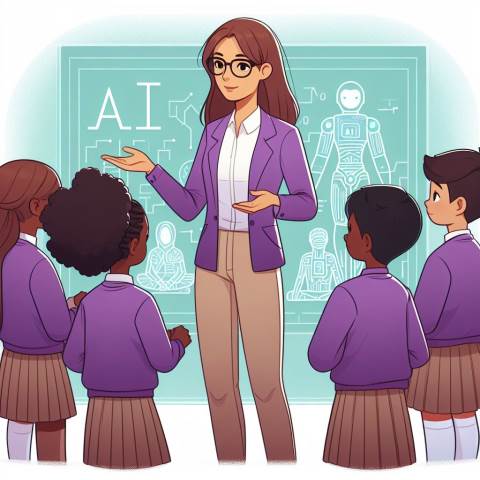

In the past year at Darlington, I've been working on finding the best way to use Artificial Intelligence (AI) in my lessons. I teach English, and at first, I was worried about using AI because I thought students might use it to cheat or complete their assignments. I have spent a lot of time trying to figure out how to make sure AI wouldn't be a way for students to avoid doing their own work, but using it as a resource.
As I learned more about AI—what's good about it and what's not—I realized it could actually be helpful in our classroom. One big moment was when we used AI to create pictures of characters from a story we were reading to discuss topics of bias in literature. It led to some really interesting talks about how the AI's ideas were similar or different from ours.
In November, I went to the Georgia Educators Technology Conference in Atlanta, where I learned even more about how we can use AI in education. Big universities like Harvard and the Georgia Institute of Technology think it's a good idea to use AI in assignments as long as the students include statements about how they used AI.
Back at Darlington, I tried using AI in different assignments, and it made a difference. In English 1, students used AI to come up with story ideas, and then used the idea to then write their stories. By having this resource, students were able to avoid approaching the dreaded "blank page." Students were then able to focus on the skills of writing a narrative story versus spending excess amounts of time on the prompt. In English 2, where we usually struggle with research papers, students used AI and their thesis to create an outline and plan their papers, which led to the essay being more organized and better overall. Also, the feedback tool that AI has helps students by letting them ask specific questions from their rubrics or asking for strengths and weaknesses of their papers, and it gives students some guidance of what to fix and for them make their writing better before turning it in.
AI is always changing, so teachers have to keep learning about it and figuring out the best ways to integrate modern technology into our teaching. We want to make sure students are ready for the future, so using AI as a tool helps us teach important skills without replacing them. Our focus is on making sure students can think critically, write well, and read effectively, and using different resources, like AI, which helps further their understanding of the skills. Seeing AI as a helper, not a replacement, makes sure students can use all the resources available to do their best.